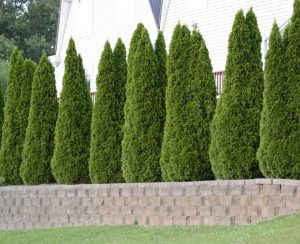2020 was one of the hottest years for Australia. Heatwaves are becoming more common, particularly in Brisbane and Sydney. Penrith in New South Wales recorded temperatures as high as 49°C, hot enough to put the healthiest people at risk of dehydration and heatstroke. As climate change continues unabated, you can expect higher temperatures and longer summers. Staying safe in the heat becomes crucial, and a few simple measures can ensure you can weather out the hot summers.
Avoid the Sun
The sweltering heat can be unbearable, so try to avoid getting under the sun as much as possible. Schedule your trips and activities early in the morning or late in the afternoon to avoid most of the sun’s heat. Stay indoors if you can, and hold off your usual sports and physical activities when it is a bit cooler.
Of course, heat isn’t the only thing the sun brings, as sunlight contains ultraviolet (UV) radiation. Australia is constantly bombarded by high levels of UV, making it one of the highest-ranking nations regarding the prevalence of skin cancer and melanomas. Sunblock is an excellent way to consciously protect yourself from UV.
However, the most dangerous kinds of exposure are the ones you aren’t aware of. Just driving in your car will expose you to massive amounts of UV. Damage accumulates in your daily commutes, increasing your risk of developing skin cancer and melanomas. Stay safe in your car by lining your windows with UV-filtering film. They take a couple of hours to install, and they’re a lot better than putting on sunblock on your way to work.
Add Shade
Blocking direct sunlight can minimise the heat in your home. Fruit trees are great options, but planting one will take years before it provides any notable shade. You can get instant shade by replanting grown trees, but the process can be expensive.
One good option is to extend the shadow of your house by adding a patio. The extra shade creates a wall of cooler air between your door and the outside, bringing temperatures down by 3 to 5 degrees. A patio allows you to stay outside your house and still be in the shade. It’s great for early morning coffee or perhaps afternoon tea with friends. You can build a patio on your own with DIY kits that cost around $2,000, but it’s always preferable to go through proper patio builders if you want your patio built properly.
Insulate Your Home

Without some insulation, your house can become a veritable oven during summer. Insulation keeps your house cool by limiting the effects of outside temperatures inside your house. Your house can stay at a cool 28°C even if it is a scorching 40°C outside.
Heat transfer primarily occurs through the roof. As the sun heats the top of your house, the heat eventually spreads throughout your house. A heated rooftop and ceiling can remain heated way after the sun has gone down, keeping your home uncomfortably warm during the night. Insulating your ceiling and attic provides the most bang for your buck. It limits the most heat while requiring very little labour and equipment, especially if the sprayed foam is used.
Open vents can also bring in hot air, so make sure to check your home for undiscovered vents and openings. Proper insulation will ease the pressure on your HVAC or air conditioning systems. You can expect a drop in power consumption by around 20 to 60 percent, as your cooling systems won’t have to vie with very high temperatures.
Turn Up the Air Conditioner
Don’t skimp on the air conditioning, especially during summer heatwaves. Saving a few pennies doesn’t make sense if you or a family member has to spend a few days in the hospital as a consequence. Heat-related illnesses are becoming more common, and there have been more than a few deaths over the past years.
Maintaining a cool and comfortable home environment is essential, especially if you have kids or elderly relatives living in your home. If you want to be more environmentally friendly, opt for a modern heat pump. Advances in technology have made heat pumps more efficient, to the point of surpassing normal air conditioning units when it comes to cooling. Of course, heat pumps will require more complex (and expensive) installation than your normal HVAC. However, they consume less power, so you’ll save a bit on your monthly bills.
Due to the ongoing climate change, heat waves are the new normal in Australia. If there’s no avoiding them, you might as well take measures to keep yourself safe from the heat and your home cool during summer.











